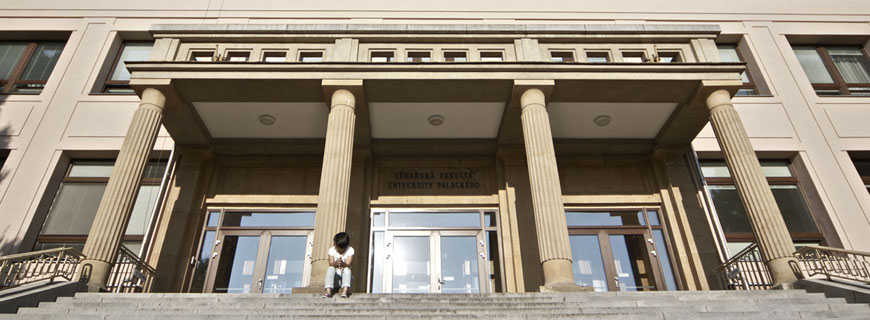
Department of Anatomy
Scientists from the Department of Anatomy map and study brain diseases, the sense of balance and function of the inner ear, salivary gland tumours, prevention of childhood obesity, and many other areas. The have produced over two dozen educational films, for instance Video Atlas of Human Anatomy, Guide to Limb Dissection, and Interactive Atlas of the Dissection of the Human Brain and Surface Structures.
The body “pickled” in resin
Unique novelties, such as the educational tools called plastinates – models of body parts made from human tissue – are available to Anatomy students. The preparations are preserved by a resin or another polymer and placed into special boxes. It is a very durable and realistic teaching aid for students, as well as doctors and medical staff members.
Valuable anatomical atlases
Experts from the Department of Anatomy focus on collaboration with clinical disciplines in the research of steroid receptors in connection with neurodegenerative brain disorders such as Huntington’s disease. They have elaborated a highly valuable atlas: Continuous Monitoring and Description of Psychiatric and Neurological Symptoms in Patients with Huntington’s Disease. Prevention of childhood obesity is explored jointly with experts from sport and exercise medicine. They have developed The Interactive Clinical Anatomical-Pathological Human Atlas Based on Screening Methods.
Olomouc experts actively work with the Emergency Ward at the Teaching Hospital Olomouc – thanks to their collaboration, the Clinical Applied Anatomy programme was established, which provides a maximum of practical skills to students as well as professionals.
The art of saving lives
The key factors in saving human lives are preparedness and thorough training. The UP Faculty of Medicine and Dentistry in Olomouc is one of the few Czech institutes offering the study programme Emergency Medicine and Disaster Medicine. Students learn to recognise acute conditions across the whole spectrum of medicinal disciplines and quickly respond in situations when the patient’s life is at risk. The instruction in theory is followed by practical training of life-saving exercises. The aim of the study is to acquire the skill of responding to a mass occurrence of injuries and to learn the rules for treatment of multiple traumas. The Centre for training in this prestigious discipline is supplemented by the Anatomical-Clinical Plastinates Centre.
The department also provides education in basic medical disciplines in all types of medical and non-medical study programmes and specialised training in the postgraduate study programme. The department also hosts a Student Science Club. Volunteers facilitate in the teaching process and participate in the investigation of assigned research tasks.